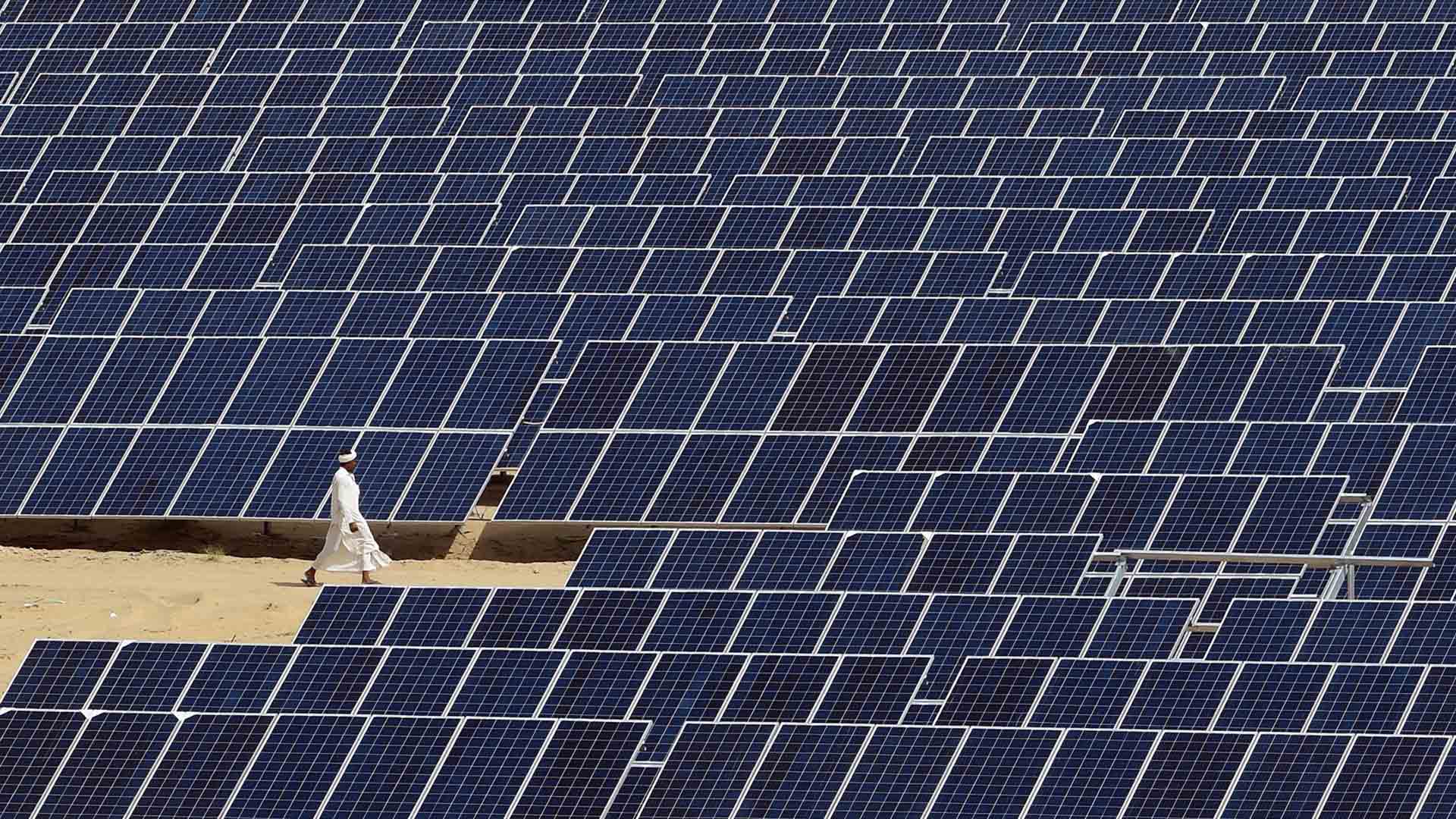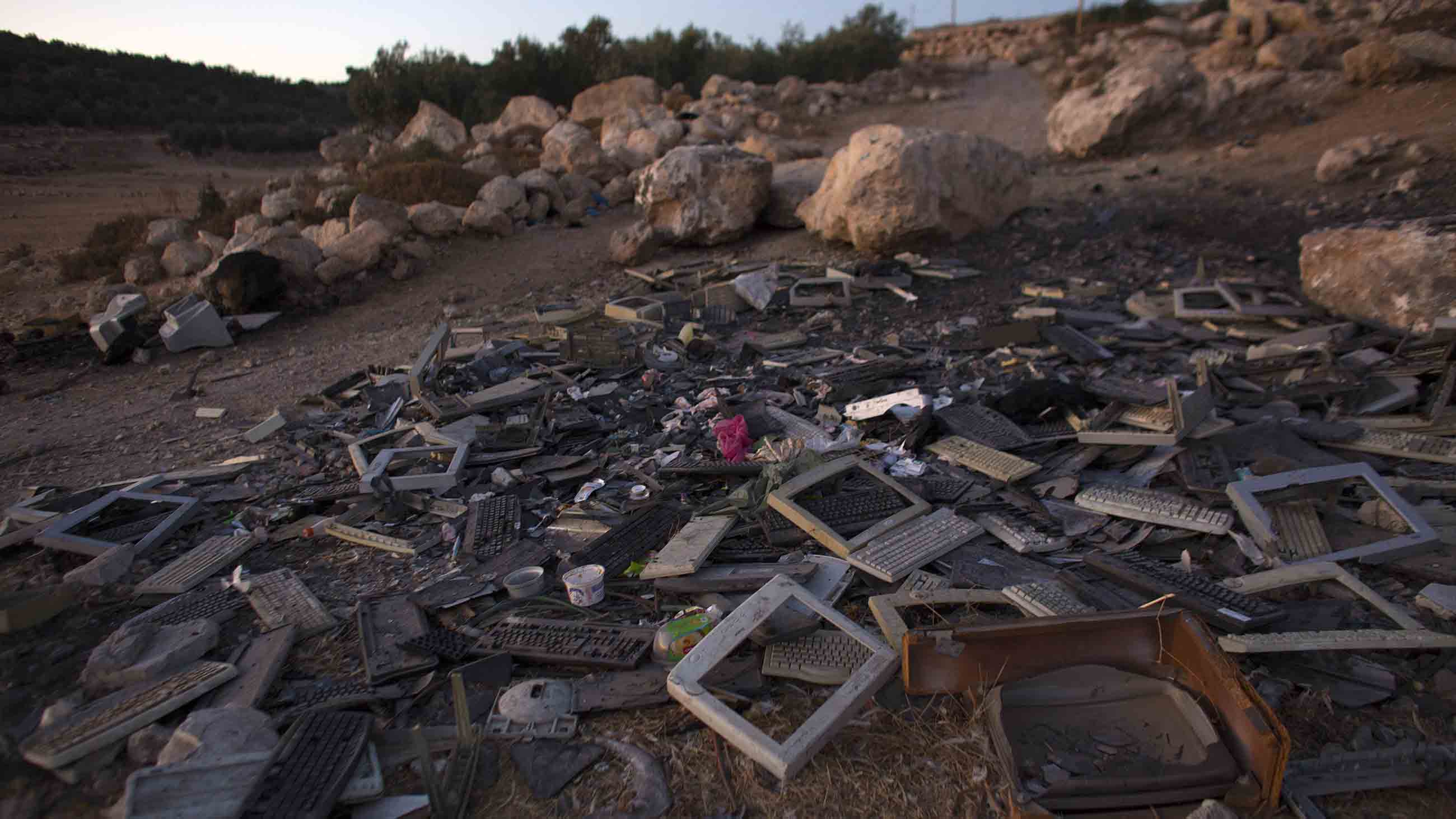For Developing Countries, More Solar Power — and Maybe More Lead?
At the 2018 United Nations climate meeting in Poland, the European Union and the Indian-led International Solar Alliance (ISA) signed a joint declaration that climate change activists say could help India meet its renewable energy target by 2022. The country is one of several — including China, Brazil, and Bangladesh — that have announced ambitious initiatives to expand their use of solar power. A year later, at the next U.N. climate summit in Madrid, India’s environment minister, Prakash Javadekar, urged more countries to join the ISA “to speed up this alliance to trap solar energy in a big way.” More than 60 have signed and ratified the agreement.
For advocates of renewable energy and climate change activists, these initiatives seemed like good news. Fast-growing nations like India, after all, are expected to rapidly increase use of planet-warming fossil fuels in coming decades, and adoption of renewable alternatives could help to dampen the environmental and climate impacts as their economies expand. But some public health researchers are concerned that the rapid and aggressive push for solar power in some developing countries can have a frequently overlooked side-effect: Localized spikes in lead poisoning.
The problem, they say, is that a portion of solar panel installations in these countries will not be connected to the national electricity network — as they typically are in the U.S., U.K., and Denmark. Indeed, while grid connectivity is reliable and rooftop solar installations don’t need lead batteries for on-site storage in many bigger Indian cities like Mumbai and New Delhi, in smaller towns, and remote rural areas — where off-grid solar activity is underway — the quality of connection to the national electricity grid is poor. Many villages get electricity for only two or five hours a day, and the power supply from the grid is erratic and unpredictable, meaning that many solar projects in these areas continue to be heavily reliant on lead-acid batteries for storing unused solar power.
The situation is similar across the developing world. In sub-Saharan Africa, some 600 million people still lack access to electricity. In areas where grid connectivity is infeasible, microgrids that rely on solar or other types of renewable energy may offer solutions. According to a report by the United States Agency for International Development and the Department of Energy’s National Renewable Energy Laboratory, “the vast majority of batteries in micro-grid applications worldwide have been lead-acid” to date. In Kenya, where the government is aiming to provide electricity to all residents by 2022, off-grid systems play an important role. And according to a draft report prepared for the country’s Energy Regulatory Commission, lead-acid batteries are the main form of energy storage available on the market.
Meanwhile in India, tens of millions households remain without power. Where grid connections prove impossible, lead-acid batteries will almost certainly be used.
As in most developing countries, recycling of lead-acid batteries in India is also not adequately regulated to protect public health. This results in lead being released back into the environment. “This is the, kind of, dirty side of renewable energy,” said Pamli Deka, associate director of the energy program at the World Resources Institute in India. While solar energy is considered clean, she said, not many organizations and energy enterprises are talking about the downsides, “for various reasons just like the oil and gas industry would not talk about the bad things of oil and gas.”
While the impacts of prolonged lead exposure are extremely well known, those working in or living near recycling plants aren’t always aware of the dangers, which include higher risks of cardiovascular disease and high blood pressure. The heavy metal can also cause damage to the kidneys, reproductive system, and the central nervous system. And while for adults, lead poisoning is one of the most significant hazards to occupational health, for children’s health, the risks are even higher.
“When a battery becomes old, the lead comes out in the form of lead sulfate and corrodes,” said Amod Pokhrel, a lecturer at the University of California, Berkeley School of Public Health. If particles from those corroding batteries end up on the floors of nearby houses, Pokhrel says, young children could get exposed to them.
Childhood behavioral problems such as reduced attention span and anti-social tendencies have been linked to early lead exposures. And studies have long connected prolonged lead exposure to developmental delays, poor performance in school, lower IQ scores, loss of appetite, weight loss, and irritability. The Institute for Health Metrics and Evaluation (IHME) at the University of Washington found that in 2015, lead exposure was responsible for 12.4 percent of the global burden of developmental intellectual disability.
Awareness of the potential connection between increased lead contamination and off-grid solar energy projects is attributable to a handful of studies conducted over the last decade. Perry Gottesfeld, executive director of Occupational Knowledge International, a research organization that identifies and monitors exposures to hazardous materials, said solar programs often fail to take account of where batteries are being made and where they’re getting recycled.
In a 2011 study published in the journal Energy Policy, Gottesfeld and his co-author, Christopher Cherry at the University of Tennessee, Knoxville, noted that in countries with advanced infrastructure, about 5 percent of the mass of lead used to produce lead-acid batteries gets released into the environment. In China and India, that figure rises to 34 and 22 percent, respectively
“There is a failure on the part of those who are promoting these panels,” Gottesfeld said, “including the World Bank, the International Finance Corporation, even U.N. agencies that are advocating and providing financing for these systems.” To his knowledge, Gottesfeld said, none of these programs “require that the lead batteries be collected back by the supplier or the manufacturer of these systems. And that’s a huge problem in most of the world.” Officials from the World Bank and the Rockefeller Foundation (which has been funding various solar energy projects in India) did not respond to repeated requests for comment.
According to a 2013 study of nearly 95,000 children in China, 24 percent had blood lead levels of 10 micrograms per deciliter, 16 percent higher than the global average. The U.S. Centers for Disease Control and Prevention’s blood lead level of concern is 5 micrograms per deciliter.
Lead gets stored in the teeth and bones, where it remains for decades. During pregnancy, that lead is released in the blood and affects the developing fetus. These escalating problems are not limited to Asia. In a 2018 study published in the journal Environmental Research, for example, Gottesfeld and co-authors analyzed soil samples from 15 lead battery recycling plants and one manufacturing site across Nigeria, Kenya, Ghana, Mozambique, Tunisia, Tanzania, and Cameroon. Forty-two percent of samples taken from outside these facilities had lead levels in excess of the U.S. Environmental Protection Agency’s standard for residential soil.
Experts are concerned that the informal sector uses crude methods for lead recovery that could potentially result in millions of tons of lead being released into the environment globally — particularly with the rapid expansion of solar installations in small, developing locales. “When you’re talking about a solar panel and a lead-acid battery, of course, there’s probably 1,000 or 10,000 times more lead in the battery than in the solar panel,” said Dustin Mulvaney, an associate professor of environmental studies at San José State University.
When lead-acid batteries reach the end of their life cycle after two to five years, adequate recycling plans are required to prevent lead pollution.
“In the case where a project has a sponsor that has an end-of-life management plan, I probably would have less concern. But we’re talking about some very rural places that are very far from those kinds of institutions, so it’s not as likely,” Mulvaney added.
Currently, India has 550 authorized lead battery recycling plants. According to a 2011 study by the Indian Bureau of Mines, only 40 percent of these registered recyclers were operating. To make matters worse, they were operating only at half of their capacity. In comparison, Gottesfeld said, the U.S. has only 11 or 12 such plants, even though the country’s lead-acid batteries market is much larger than India’s. “Consolidation is key because you can’t afford to do this with the pollution-control equipment on a small scale,” Gottesfeld said. “It only is economically feasible on a large scale.” In order to consolidate the industry, Gottesfeld added, there need to be laws in place that require the takeback of used lead batteries. And where there is already contamination, “you need to test the children and abate the soil and the contamination in these communities.”
In February, the Modi administration proposed new rules that will make it mandatory for manufacturers and sellers to collect used batteries and have them sent to registered recyclers. The rules are currently open for public comment.
Last September, Modi announced a more ambitious renewable energy target than his country set at the Paris Climate Agreement, pledging to increase capacity from 175 gigawatts by 2022 to 450 gigawatts by 2030. As of December, India had installed just over 85 gigawatts of renewable energy, 44 percent of which came from solar and all of which — according to the Ministry of New and Renewable Energy — is connected to the grid.
But in remote rural and semi-urban areas of India, the distance between the transmission line from a solar energy project’s location to the electricity point of any utility company can pose a challenge, noted Rohit Kumar, the head of the Indian subcontinent at REC Solar, a Norwegian solar panel manufacturing company. And even when connections are possible, power stations aren’t always able to accept the additional electricity. That leaves lead-acid battery storage as the more likely option in many areas.
(According to Kumar, REC Solar only manufactures solar panels that are meant to be connected to India’s national electricity grid network.)
Compounding the problem, lead batteries used in local solar installations join those already in use in India and elsewhere for vehicles, telecom towers, and computer servers. India’s Ministry of Environment and Forest implemented a rule as far back as 2001 to deal with the growing lead contamination issue, mandating that manufacturers of lead batteries should collect at least 90 percent of used batteries sold, and that used batteries only be sold to registered recyclers. Many manufacturers have previously failed to follow that rule due to a weak collection and enforcement system. Whether the Modi administration’s proposed update to the rule will result in any improvements is far from clear.
“In India, Bangladesh, and all of Africa,” said Gottesfeld, “it is well known that a considerable proportion of the batteries get diverted to the informal sector, instead of being recycled at large facilities with pollution-control equipment.”
A 2015 study published in the Journal of Health and Pollution noted that because of these factors, the amount of battery scrap that registered recyclers receive is very limited. In small and rural recycling plants, the used lead batteries from vehicles, power generators, and even solar installations are often broken open outdoors and the lead paste is immediately discarded because of a lack of awareness about its environmental impacts.
In an email, B Vinod Babu, nodal officer of the waste management division of India’s Central Pollution Control Board (CPCB), admitted that there have been issues with regard to compliance by dealers, manufacturers, assemblers, and importers of lead-acid batteries. CPCB, he wrote, has been following up with the State Pollution Control Boards for more effective implementation of the rules.
Meanwhile, the biggest manufacturer of lead batteries in India, Exide, which supplies batteries to off-the-grid solar installations in hospitals, gas stations, and households in rural and semi-urban places across the country, says it is following the rules.
Satyabrata Pattanayak, head of solar sales at Exide Industries Limited, insisted that Exide collects nearly all of its used lead batteries. “In my mind, 90 to 95 percent of batteries are recycled by Exide.”
Whether or not that’s accurate, public health researchers say they are concerned that the rise of solar usage in remote, developing areas — and the often unsafe practices undertaken in battery recycling — will inevitably come with increased childhood lead exposures.
One study of children in two rural villages in Thailand who lived in houses with lead batteries that were connected to solar panels suggested significant evidence of elevated blood lead levels, for example. The government had supplied the solar panels because those two villages did not have any electricity supply. Some of the villagers had installed the solar panels right outside their bamboo or wooden houses but kept the lead batteries inside their households for storing excess solar energy. The researchers observed that 50 percent of children who lived in houses with lead batteries — a common practice in many developing regions — had elevated blood lead levels compared to 23 percent of children who lived in a house without lead batteries.
More recently, in a 2018 study published in the journal Environment International, researchers conducted a meta-analysis of the blood lead levels in Indian children living across the country from data published in various journals between 2010 to 2018. They estimated that lead exposure had resulted in 4.9 million years of disability-adjusted life years, which is a measure of the number of years lost due to ill-health or disabilities. Children who suffer from lead poisoning also experience symptoms like stomach aches, constipation, fatigue, vomiting, seizures, and hearing loss.
“India’s certainly one of the worst countries in the world with regard to informal use of lead-acid battery processing, said Bret Ericson, the lead author of the study and now a consultant with the U.N. Environment Program. “It’s one of the countries where the problem is most severe, particularly in the northeastern part.”
According to Ericson, half of the world’s lead gets recycled in the informal sector. “These are just people trying to make a living,” he said. “They just don’t know they are poisoning people.”
Anuradha Varanasi is a freelance journalist and science writer based in Mumbai, India. She writes on health and climate change, among other topics.












Comments are automatically closed one year after article publication. Archived comments are below.
This is BS ! when batteries are “recycled” theyre simply cleaned out , re filled, and recharged. The lead is never taken out or reprocessed.
Ok, a sort of valid comment. The real issue is overly lax standards in India and other countries that look the other way on these so called recyclers. It is very, very easily fixed if they wish to do so. In India, a bigger issue is lack of basic sanitation for a large part of their population.